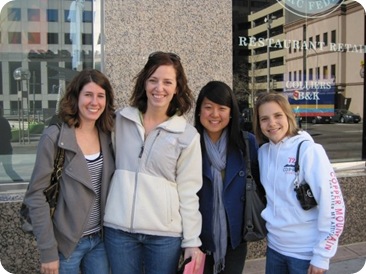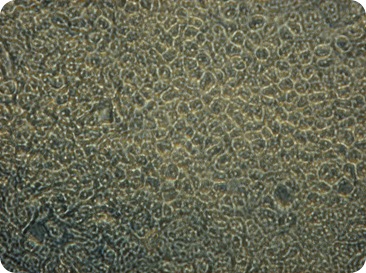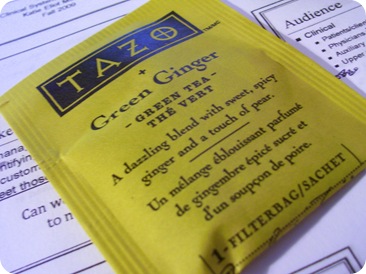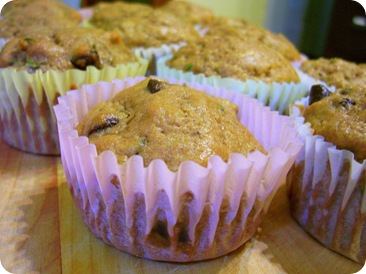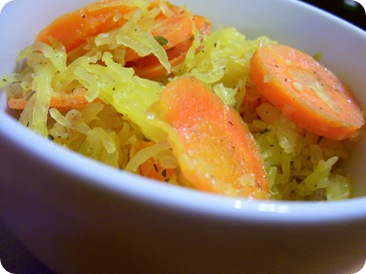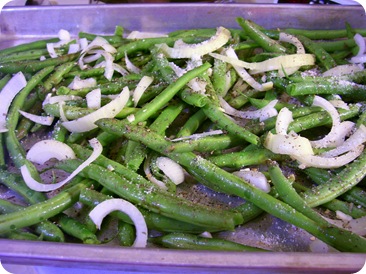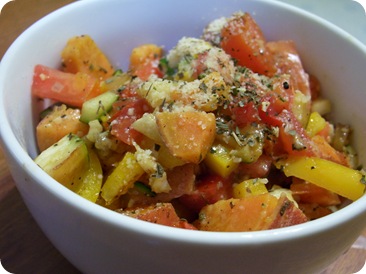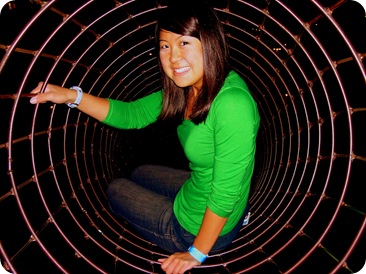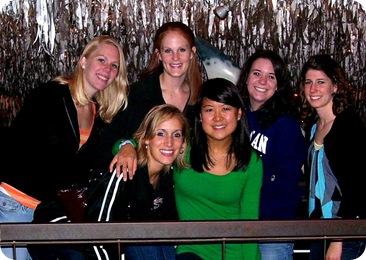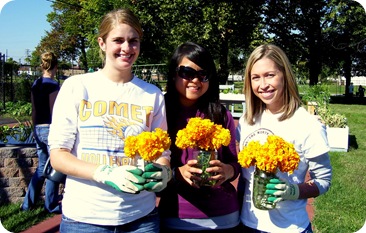
Shortly after joining the Foodbuzz community, I heard about their monthly VISA Signature 24^3 [24 meals, 24 hours, 24 blogs] event. Not being a culinary expert, I wasn’t sure if I would ever participate. But that changed when I started St. Louis University’s dietetic internship and met Dan, another intern with a culinary focus and both the experience and creativity to conceptualize a fantastic 5 course dinner [see his sketches below].
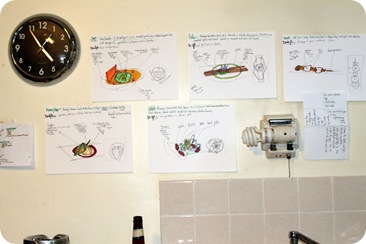
And so our 24^3 proposal was born…we wanted to feature locally grown food because we feel strongly about supporting local farmers, and as future dietitians, we know that local food is often more nutritious than food imported from thousands of miles away since it is picked at peak ripeness.
We shopped for most of our produce at Soulard, an enormous farmers’ market. Not everything there is from our immediate area, but we tried our best to get locally grown food.
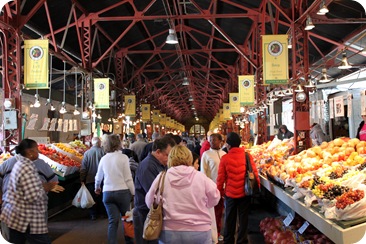
So, why the big focus on local food?
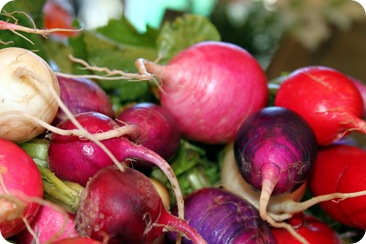
Locally grown food is kinder to the environment and reduces pollution due to decreased transport time.
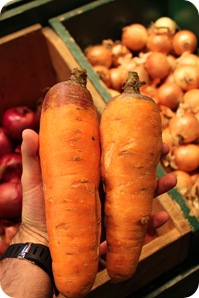
Buying local food contributes to rural sustainability and helps support the livelihoods of small farmers, whose farms contribute to agricultural biodiversity.
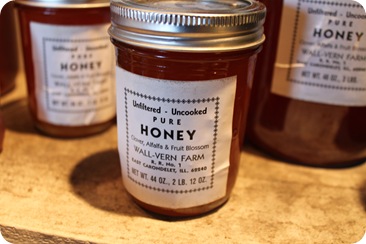
Local farms are also smaller, less open to hormone and chemical use, produce more grass-fed or free-range animals, and are more organic-friendly.
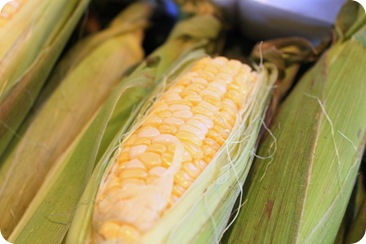
By the time we were done shopping, we had a ton of produce ready to be made into a fabulous meal. Honestly, it was a bit overwhelming, and I was glad Dan was the brains behind the whole operation.
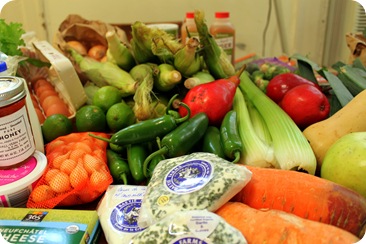
The ex-roommate’s sister, Christy, was a huge help. She spent her Saturday chopping vegetables, prepping sauces, and picking out $80 worth of wine to go with our meal {thanks, Christy!}.
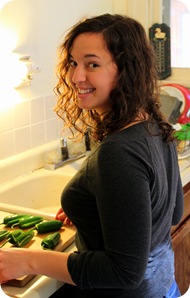
This is what happens when you overcook caramel. Oops. So maybe not everything went exactly as planned.
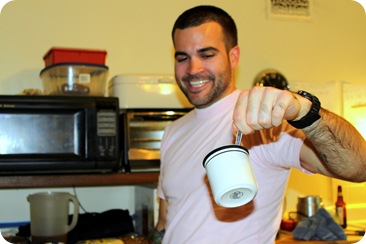
Do we look tired? I hit some sort of wall in the afternoon. I’m not used to cooking all day {and I wasn’t really even cooking, unless you count shelling 100 walnuts and using my expert blender skills, haha}.
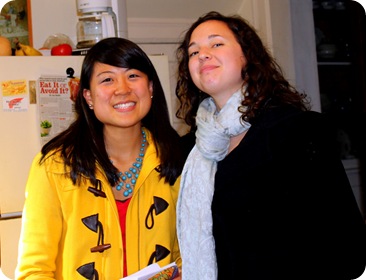
Dan and Christy making the appetizer (fried jalapeno poppers). We discussed the fact that we were incorporating fried food into our menu, which is not exactly nutritious. Our conclusion? Everything in moderation, people.
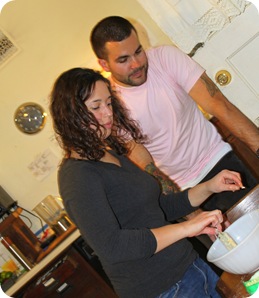
Working on the gooey butter cake with Christy and the ex-roommate. That cake was an adventure in itself.
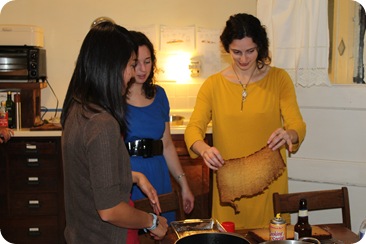
Dan with the caramel, round 2.
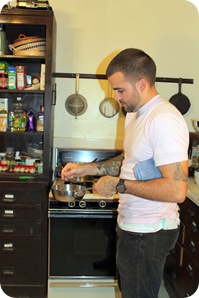
first course: providing a punch of spiciness paired with creamy and complex sensations, the appetizer featured Baetje Farms Goat Milk cheese-stuffed Jalapeno poppers tempered with creamy country grits and a dark chocolate mole.
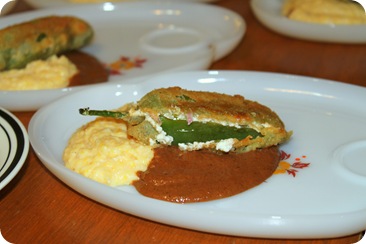
The popper was a little too spicy for me {yes, I am a hot-food wimp}, but everyone else devoured their appetizers in about 5 seconds.
second course: perfect for a fall evening, the soup was a corn chowder paired with Brussels sprout confit, roasted pearl onions, and tarragon oil garnished with jalapeno crème fraiche.
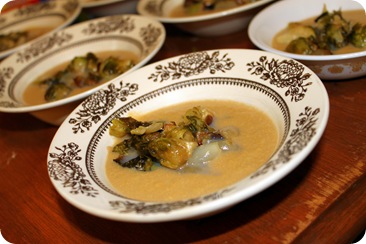
Usually I hate Brussels sprouts, but I loved this soup. It was really good with the tarragon and hint of jalapeno. The general consensus was that the Brussels sprouts really enhanced the soup’s flavor.
third course: a crisp addition to our October menu, the salad consisted of Missouri green and red apples, fennel, Baetje Farms Goat Milk cheese, and Missouri black walnuts paired with a coriander cilantro dressing.
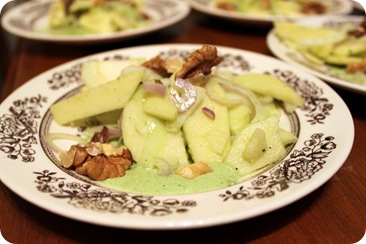
My favorite of the 5 courses by far. I loved the dressing featuring my favorite herb, cilantro, and the crispness of the apples. Or maybe I’m just a little biased because I did shell all of those walnuts.
fourth course: combining the best of savory and sweet, the entrée featured pork jowl braised in cilantro honey puree, poached and roasted leeks served with caramel and chimichurri sauce.
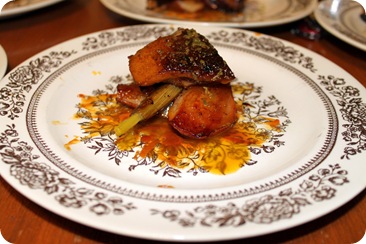
Pork jowl is a pretty fatty cut, which is a bit of a surprise, if you’re not used to it. But, hey, fat makes everything taste delicious, and the meat was really tender.
By now, most of the guests were wishing they had worn their elastic-waist sweatpants. Pressing on to the dessert course…
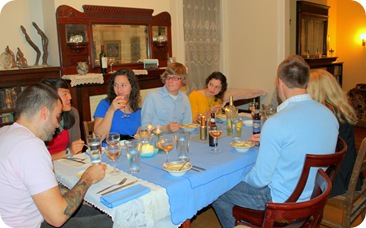
fifth course: Gooey Butter Cake is a St. Louis tradition, so it would only be fair of us to include this delectable dessert as part of our menu. Pairing the cake with a reduction made from Missouri-produced apple cider provided yet another tie into the local food movement.
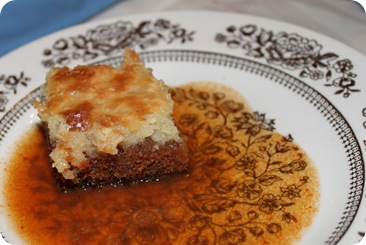
The cake didn’t really taste like any Gooey Butter Cake I’ve ever had. It wasn’t a bad taste, but it wasn’t what I was expecting. Fortunately, the guests enjoyed the cake by the looks of their empty plates.
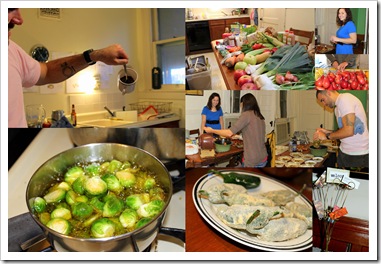
In all, it was a great day of enjoying the entire process that goes into making a gourmet meal. From shopping for produce at the farmers’ market to cooking and eating with friends….I can’t think of a better way to enjoy food.
A million thanks to Foodbuzz, Dan, Christy, and all of the guests for making this fabulous night possible….
And here’s hoping you enjoyed this post and that maybe, just maybe…you’ll be inspired to create a local food-centered menu of your own.

